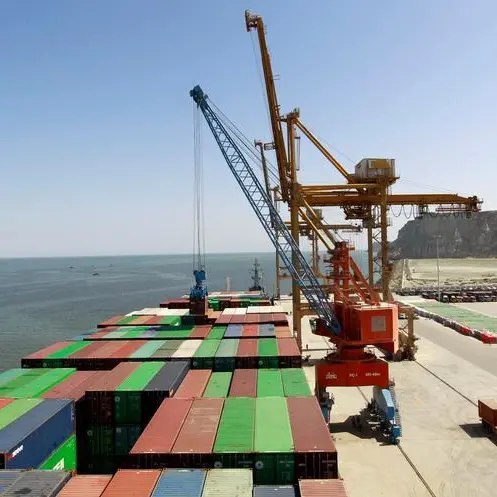PHOTO
With the effects of the El Niño now being felt across the country, the Climate Change Commission (CCC) has offered some tips to help the public cope with water shortages, rising temperatures and extreme weather conditions.
'Preparing for and coping with El Niño requires community collaboration. The CCC encourages individuals to form neighborhood watch groups to monitor and address El Niño-related challenges together,' CCC vice chairman and executive director Robert Borje said in a statement.
'Collaborative efforts can help identify solutions for common concerns and develop a stronger sense of resilience within your community,' he said.
With soaring temperatures, Filipinos are advised to consider adding insulation to their homes to minimize or prevent heat from entering.
'Placing plants strategically in the home can also reduce heat absorption, provide shade and improve air quality,' it said.
'Proper insulation is crucial to keep your home cool without depending on energy-consuming air conditioning. Check roofs, walls and windows to ensure they are insulated,' CCC, chaired by President Marcos, said.
To avoid heat exhaustion or heat stroke, the CCC urged people to drink plenty of water.
He said Filipinos can prepare homemade electrolyte solutions using salt, citrus fruits and other easily accessible ingredients to replenish essential minerals and electrolytes lost from perspiration.
To prevent water problems during the dry and hot months, the public is encouraged to collect and store rainwater by installing a rainwater harvesting system.
'This can provide water for non-potable uses such as cleaning, flushing the toilet and watering the plants. Rain barrels, gutters and filters can collect and store rainwater effectively,' the CCC said.
The public should also make sure to seal the container of collected rainwater to prevent it from becoming a breeding ground for mosquitoes, it added.
The CCC likewise recommended water-saving techniques, including reusing gray water from washing machines and showers, using a bucket instead of a hose when washing vehicles and fixing plumbing leaks promptly.
Households may also use alternative water sources in their areas, such as community wells or springs, it said.
To prevent fires and wildfires, the climate body urged the public to avoid grilling or cooking outdoors on windy days.
Furthermore, the CCC also urged households to keep fire extinguishers readily available and to create a fire safety plan, including apprising family members of evacuation routes and meeting points.
As El Niño could also bring extreme weather events including strong winds and sudden heavy downpour, the CCC instructed the public to reinforce homes by securing roofs, equipping windows with protective shutters and making sure that doors are sturdy.
It also advised individuals and households to create natural barriers by planting trees around their property that could also provide shade and contribute to sustainability.
The country is expected to sizzle in the coming weeks, with the state weather bureau predicting temperatures to reach up to 36.5 degrees Celsius nationwide and as high as 40 degrees Celsius in Metro Manila and northern Luzon due to El Niño.
Presidential Communications Assistant Secretary Joey Villarama, spokesman for Task Force El Nino, earlier said most of the provinces experiencing drought are in Luzon.
Villarama also warned at least 10 more provinces could be affected by El Niño by the end of February.
Losses
The dry spell brought by El Niño has resulted in an estimated P357.4 million in damage and production losses, according to the latest estimates by the Department of Agriculture.
In its latest El Niño bulletin, DA said 7,688 farmers have been affected in Ilocos Region, MIMAROPA, Western Visayas and Zamboanga Peninsula.
Potential production losses due to the impact of the dry spell on the affected 6,523 hectares will reach 11,480 metric tons for palay, 2,897 MT for corn and 225 MT for high value crops.
The DA said the current affected rice area of 5,011 hectares is 0.52 percent of the total target area planted, while affected corn area covered 1,263 hectares or 0.11 percent of the total target area.
Production loss for rice was pegged at 11,480 MT or around 0.12 percent of the target dry cropping season output for the year.
Corn production loss was at 2,897 MT or 0.06 percent of target production for the 2024 dry cropping season.
The DA said it is getting ready to distribute vegetable seeds in Western Visayas and Ilocos Regions as well as planting materials for high-value crops in the Zamboanga Peninsula to help farmers recover.
The DA is also collaborating with relevant agencies like the Philippine Atmospheric Geophysical Astronomical Services Administration and the Philippine Air Force for cloud-seeding operations.
It is also promoting the use of drought-resistant crops and pest-control efforts and is continuously adopting alternate wetting-and-drying methods to reduce water consumption in rice fields.
The DA also vowed to endorse affected farmers to the Department of Social Welfare and Development and the Department of Labor and Employment to help then avail of other forms of assistance
Copyright © 2022 PhilSTAR Daily, Inc Provided by SyndiGate Media Inc. (Syndigate.info).























